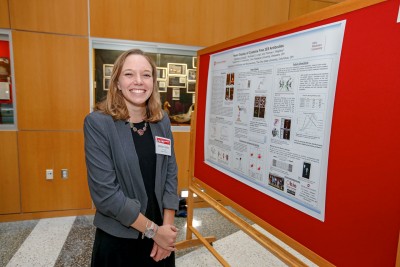Abstract
Yeast Display of Cysteine Free 3E8 Antibodies
 Student: Madeleine Sorrick
Student: Madeleine Sorrick
Faculty Mentor: Nicholas Long and Thomas Magliery (Department of Chemistry and Biochemistry at The Ohio State University. This project was conducted as part of the Ohio-Five SURE Program.)
Cancer is a leading cause of death worldwide, with about 7 million people dying from the disease every year. There are different methods of cancer treatment, but resection of cancerous tumors is generally considered the most successful approach. To accomplish this, the surgeon needs clear visualization and imaging of the tumor and healthy tissue surrounding it to come up with a surgical plan. Currently, the compound used to target tumors for CT/PET scans fluoresces all cells that are highly metabolic, which results in a large amount of background noise. For more specific images, we can use a tumor associated antigen that is displayed on the tumor cell as a marker. The Magliery lab has engineered a single chain variable fragment of an antibody called 3E8, that binds the antigen TAG-72 which is expressed on adenocarcinoma cells. One problem with 3E8 is the presence of disulfide bonds across the variable regions of the antibody. These bonds are inherently stabilizing outside of the cell, but inside the cell’s reducing environment the bonds may break and cause the protein to unfold. The cysteine residues are difficult to remove while still maintaining the initial stability and activity of wild type 3E8. For future protein engineering, a stable cysteine-free antibody may be necessary. Because of this, an efficient technique must be used to display and sequence the proteins to confirm the identity of successful Cys mutations. We chose to develop and use yeast display because of its ability to do cell sorting and undergo post translational modifications. With this display method, we can create Cys-free mutant libraries and sort cells based on which proteins can still display 3E8 and bind TAG-72 to engineer a second generation molecule.
